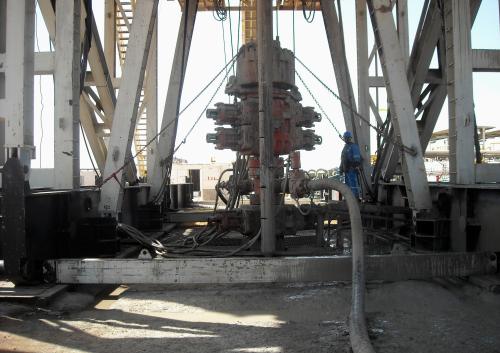South Africa offers bailout for state-owned power utility Eskom
On Tuesday, July 23, the South African minister of finance presented a bill to parliament requesting a bailout of more than $4 billion for state-owned power utility Eskom. Eskom supplies about 95 percent of South Africa’s power, but has been unable to generate sufficient revenue to meet its operational and capital demands. As a result, the utility currently holds more than $30 billion in debt, an amount that continues to increase as it undertakes repairs on power plants.
The bailout should allow Eskom to remain solvent in the face of its current debt. However, on Thursday, Moody’s Investors Service warned that the bailout could trigger a credit rating downgrade because it would be a drain on South Africa’s financial resources. A further negative, the credit rating agency added, is that the bailout lacks an accompanying plan to improve Eskom’s ability to generate revenue and become financially stable.
In other South African electricity news, a ransomware attack on electricity provider City Power left some Johannesburg residents without power on Thursday. The attack prevented customers from purchasing power and made it more difficult for City Power to respond to outages. On Friday, Johannesburg officials said that most of the company’s IT systems had been restored, but acknowledged that some problems remained.
Kenya re-nationalizes the troubled Kenya Airways
On Tuesday, Kenya’s parliament voted to re-nationalize Kenya Airways, which was first privatized by the government 23 years ago. The airline has not been profitable since 2014 and faces mounting debt and losses. A 2017 restructuring converted $2 billion in losses to equity. Currently, the government owns a 48.9 percent stake in the carrier, a consortium of local banks own 38 percent, and Air France-KLM owns 7 percent, with minority shareholders accounting for the rest. All shareholders will be bought out over the next two years with Air France-KLM being offered the option to continue as a technical partner.
Following the parliamentary vote, the transport ministry will draw up a roadmap for nationalization over the next three months. Nationalization will exempt the airline from taxes on a range of inputs, and proponents hope it will improve competitiveness. As per the approved plan, the airline will become part of a holding company that will also control three other entities—the Jomo Kenyatta International Airport, an aviation academy, and the Kenya Airports Authority. Commenting on the new structure, David Pkosing, chairperson of parliament’s transport committee, noted, “The model we are proposing is not new, it is being used by Emirates, Morocco, Egyptian, and Ethiopian. Most successful airlines operate in the same model.”
Kenya and Namibia take big steps toward renewable energy
On Saturday, July 20, Kenya launched the Lake Turkana Wind Power project, the largest wind power farm on the continent, in Loyangalani, Marsabit County. Leaders anticipate that the new $775 million facility, which has 365 wind turbines with a capacity of 850 kilowatts each, will increase the country’s electricity supply by 13 percent. The new wind farm is another step in Kenya’s ambitious goal of getting to 100 percent green energy by 2020. Already, the country gets 70 percent of its installed electricity capacity from renewable sources, which is three times the global average. Despite this progress, Kenya still faces challenges in electricity access: Blackouts are common, power is costly, and one in four Kenyans do not have access to electricity.
In other renewable energy news, on Wednesday, July 24, Namibia announced its ambitious renewable energy strategy, which includes building four renewable energy plants that will harness energy from biomass, solar, and wind over the next five years. Construction is anticipated to be completed in 2022 and cost $338 million.
The Brookings Institution is committed to quality, independence, and impact.
We are supported by a diverse array of funders. In line with our values and policies, each Brookings publication represents the sole views of its author(s).










Commentary
Africa in the news: South Africa bails out Eskom, Kenya Airways is nationalized, and Kenya and Namibia announce green energy plans
July 27, 2019